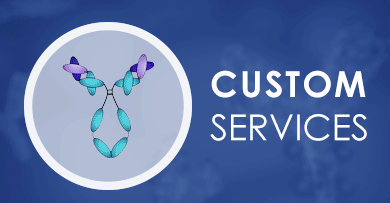 Loading...
Loading...

EPHB1
 Loading...
Loading...Anti-EPHB1 Products
-
- Species Reactivity: Human
- Type: Mouse IgG
- Application: WB, IHC, ELISA
-
- Species Reactivity: Human
- Type: Mouse IgG1
- Application: ELISA, WB, IHC
-
- Species Reactivity: Human
- Application: ELISA, IHC-P, WB
-
- Derivation: Phage display library
- Species Reactivity: Human
- Type: Rabbit IgG
- Application: WB, IP
-
- Derivation: Mouse
- Species Reactivity: Human
- Type: Mouse IgG
- Application: WB, IHC-p, IF, ELISA
- Rabbit Anti-EPHB1 Recombinant Antibody (VS13-YC360) (VS13-YC360)
-
- Species Reactivity: Human, Mouse, Rat
- Type: Rabbit IgG
- Application: WB, IP
- Anti-Rat EPHB1 Immunohistochemistry Kit (VS-0525-XY2314)
-
- Species Reactivity: Rat
- Target: EPHB1
- Application: IHC
Can't find the products you're looking for? Try to filter in the left sidebar.Filter By Tag
Our customer service representatives are available 24 hours a day, from Monday to Sunday. Contact Us
For Research Use Only. Not For Clinical Use.
Background
Enzymes, Metabolic proteins
Intracellular, Membrane (different isoforms)
Cell type enhanced (Astrocytes, Oligodendrocyte precursor cells, dendritic cells, Excitatory neurons, Inhibitory neurons, Early spermatids, Late spermatids)
Group enriched (neutrophil, plasmacytoid DC)
Group enriched (HDLM-2, HMC-1, RPTEC TERT1)
Heterotetramer upon binding of the ligand. The heterotetramer is composed of an ephrin dimer and a receptor dimer. Oligomerization is probably required to induce biological responses (By similarity). Interacts with EPHB6; transphosphorylates EPHB6 to form an active signaling complex. Interacts with PICK1 (By similarity). Interacts (through Tyr-594) with NCK1 (via SH2 domain); activates the JUN cascade to regulate cell adhesion (By similarity). The ligand-activated form interacts (through Tyr-928) with GRB7 and GRB10 (via SH2 domains). The ligand-activated form interacts (residues within the catalytic domain) with GRB2 (via SH2 domain). Interacts with GRB2, SHC1 and SRC; activates the MAPK/ERK cascade to regulate cell migration. Interacts with CBL; regulates receptor degradation through ubiquitination. Interacts with ACP1.
Kinase, Receptor, Transferase, Tyrosine-protein kinase



